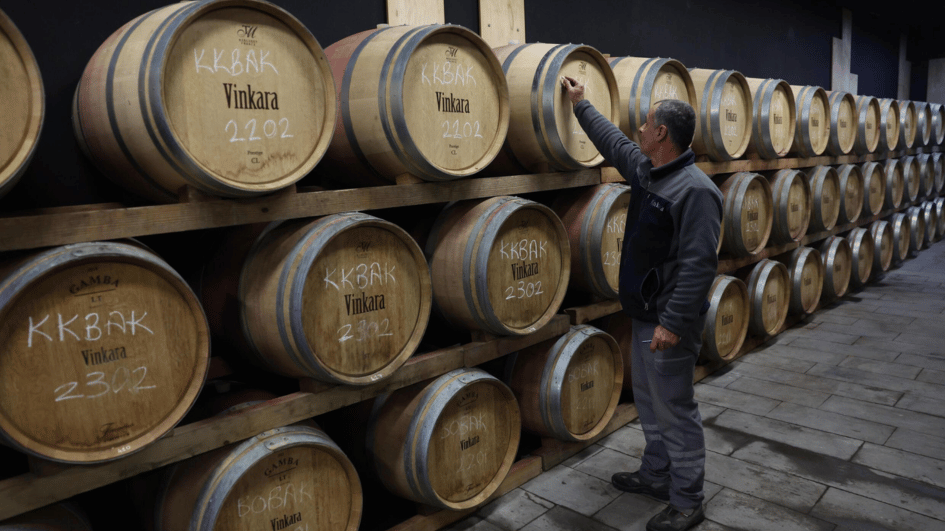More than a bubble: Turkish sparkling wines win fans
ANKARA

Drinkers are getting into something of a fizz over Turkish sparkling wine.
"We are selling out very quickly. We cannot meet the growing demand especially as the New Year [celebrations] near," said Candaş Mısır of the Vinkara winery an hour from Ankara.
When it comes to celebrating a big occasion, few might think of reaching for a bottle of Turkish bubbly in a market dominated by French champagne, Spanish cava and Italian prosecco.
But Mısır's wine, made from a local Turkish grape variety that almost died out in the 1980s, won the gold medal for the Best Sparkling Wine in the World at a competition in France in 2020.
His fruity "Yaşasın," which means "Hooray!" in Turkish, has a floral aroma reminiscent of fine cremants from Alsace in eastern France. And he is the first to admit that the connoisseurs were initially a bit skeptical about the idea of Turkish bubbly rivalling champagne.
"We received a very cautious welcome at the start," Mısır told AFP. "People were saying, 'What do you mean, a Turkish sparkling wine?'"
"However one taste is enough to make these prejudices fade away," he added.
Vinkara was the first Turkish winery to start producing sparkling wine in 2006 using the traditional champagne method from its vines around the small town of Kalecik.
Others have since followed with production rocketing. Turks are making more and more dry white wines, with production tripling over the last 15 years, and five times more sparkling wine being made.
The success of the wines is down to their quality, Mısır argued, being almost entirely picked by hand using the dark-skinned local grape Kalecik Karası, the "black of Kalecik," which is nicknamed the "Turkish pinot noir."
On the point of disappearing in the 1980s, it has been resurrected thanks to Turkish researchers and winegrowers.
Burak Demirel, an oenologist and winemaking instructor at Namık Kemal University based in northwestern province of Tekirdağ, said the rediscovery of indigenous grape varieties has helped spur the recent success of Turkish dry and sparkling wines.
"Universities and winemakers are doing extraordinary work in Türkiye. They have identified more than 800 indigenous grape varieties," he said. "This is an enormous potential that Türkiye has underexploited for years... Today we are witnessing an awakening."
Andrea Lemieux, a wine expert who has been living in Istanbul for 11 years, said Turkish sparkling wine does not yet have the prestige of its French and Italian rivals, "but the quality is there."
"People are very price conscious and since they don't know the reputation of Turkish wines well, they might be hesitant to spend 50 euros on a bottle."
But winegrowers are working on their marketing, and blogs by foreign experts praising Turkish wines are helping spread the word.
"There are so many more people writing about Turkish wine now and coming to Türkiye to try the wine. It's becoming more well known," said Lemieux, author of "The Essential Guide to Turkish Wine."
"Yaşasın" is even now being sold in the United States. "There's definitely interest," she said.
Despite the growing popularity, the international market is still limited, with only 30,000 liters of Turkish sparkling wines being exported last year.
Yet Turkey grows an enormous amount of grapes, and is the world's sixth biggest producer. "But only four percent of this harvest is intended for winemaking," Ali Basman, the president of Wine Producers Association, told Turkish media. "We are far from fulfilling our potential," he said.
"There's a young generation of Turkish producers and oenologists who are doing a lot of research and are at the cutting edge of what's new," he added. "The future of Turkish sparkling and dry wines is bright."
















